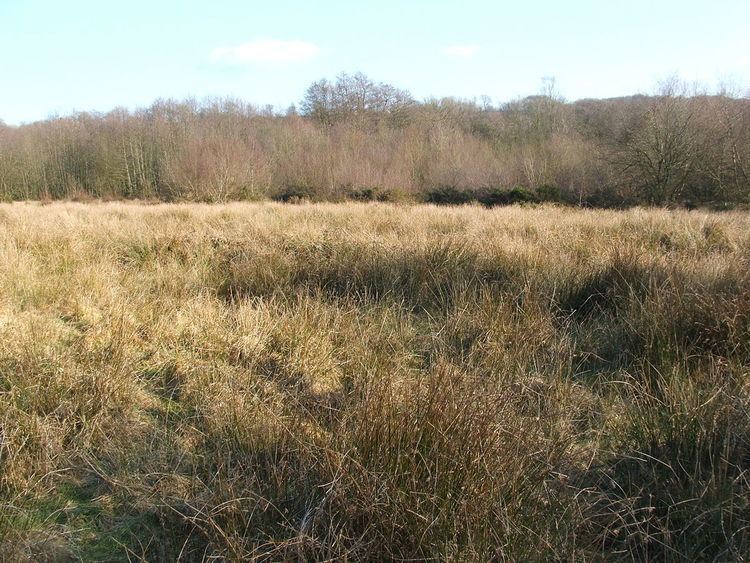 | ||
Purple moor grass and rush pastures is a type of Biodiversity Action Plan habitat in the UK. It occurs on poorly drained neutral and acidic soils of the lowlands and upland fringe. It is found in the South West of England, especially in Devon.
Contents
- Etymology
- Typical grasses
- Characteristic species
- Key animal species associated with purple moor grass and rush pastures
- British National Vegetative Classification
- Threats
- Management
- Protection
- References
The vegetation consists of species-rich, semi-natural grassland containing abundant purple moor grass (Molinia caerulea) and one or more of several creeping rushes: sharp-flowered rush (Juncus acutiflorus), jointed rush (Juncus articulatus) and blunt-flowered rush (Juncus subnodulosus).
Only 8% remains of the area thought to have existed in 1900. In the UK estimate the area is thought to be less than 70,000 hectares (170,000 acres). Their importance is recognised and are included as a priority habitat in the United Kingdom Biodiversity Action Plan.
Etymology
In Devon and Cornwall it is known as culm grassland, after the Culm Measures on which it is predominantly found. In East Anglia it is known as litter meadow due to the practice of cutting it for bedding. In Wales it is known as rhôs pasture.
Typical grasses
Common bent (Agrostis capillaris), crested dog's-tail (Cynosurus cristatus), floating sweet grass (Glyceria fluitans), marsh foxtail (Alopecurus geniculatus), purple moor grass (Molinia caerulea), red fescue (Festuca rubra), sweet vernal grass (Anthoxanthum odoratum).
Characteristic species
The Natural England Higher Level Stewardship Farm Environmental Plan handbook defines the habitat as grassland with at least two of the following species are found frequently, with another two being found occasionally.
Key animal species associated with purple moor grass and rush pastures
British National Vegetative Classification
The main British National Vegetation Classification communities associated with purple moor grass and rush pastures include M23 (Juncus effusus/acutiflorus-Galium palustre rush pasture), M25 (Molinia caerulea-Potentilla erecta mire), M26 (Molinia caerulea-Crepis paludosa mire) and British NVC community MG10 (Holco-Juncetum effusi rush-pasture).
Threats
Management
Natural England Guidance advocates an average grass height of 7 and 8 centimetres (2.8 and 3.1 in) for rush during April and May, increasing to 10 and 13 centimetres (3.9 and 5.1 in) in June to October, a quarter of the sward no more than 15 centimetres (5.9 in) for grass and 40 centimetres (16 in) for rushes - a diverse sward of shorter areas interspersed by taller tussocks.
Areas of dense litter are beneficial to over-wintering insects and small mammals, but should be less than 25% of the total area in October.
Protection
In the UK there are a number of initiatives to help prevent deterioration and to restore these sites. These include designation as Site of Special Scientific Interest, national nature reserves, voluntary entry into the Environmental Stewardship Scheme by landowners, or work by voluntary conservation organisations such as the Devon Wildlife Trust. The largest area of Culm grassland in Devon is Hare's Down, Knowstone & Rackenford Moors near Rackenford and is owned by Devon Wildlife Trust. Their management regime includes controlled burning in winter and light grazing by cattle in the summer. The aim is to control the amounts of scrub and bracken without removing them completely.
